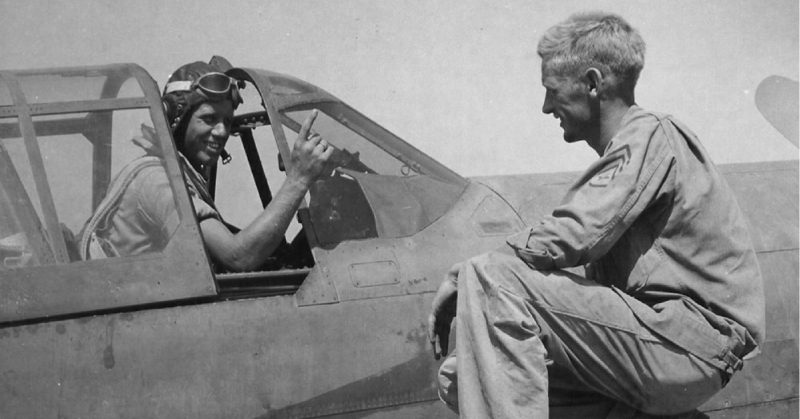In November 1942, the American 33rd Fighter Group went to North Africa. They were among the first US flyers to join the African campaign. Over the following three months, they fought an exhausting battle for control of the skies.
Arriving in Africa
The 33rd Fighter Group had been created for defense; beginning as a pursuit group to defend the American coastline.
For offensive tactics, the US Air Force was focused on long-range bombing against Japanese and German targets. There was much less thought and preparation for supporting troops in a ground war with airpower.
When the fighter group arrived at Youks-les-Bains airfield in Algeria, it included many experienced pilots, but they did not understand the sort of war they would have to fight.
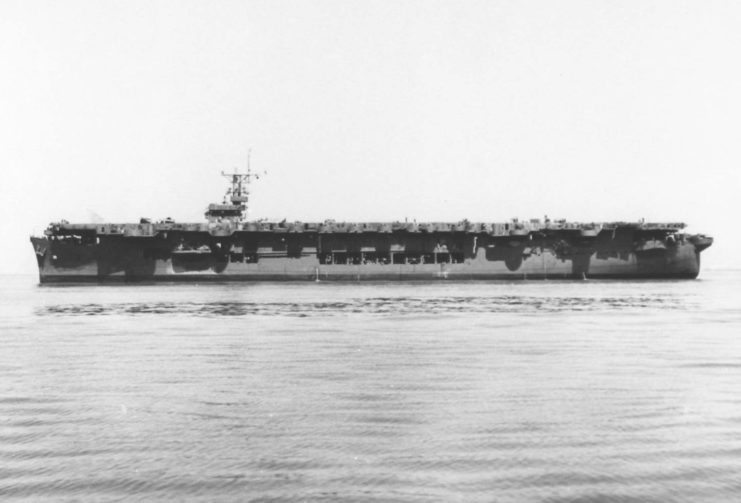
A Sad Start
The campaign did not get off to a good start. On December 6, Lt. Rufus McLeod died in a landing accident while escorting transport planes. The next day, Lt. Perry F. Browser was hit by antiaircraft fire while strafing an enemy airfield. His plane crashed, and he died.
Then the group was split up. 60th Squadron stayed at Youks-les-Bains. 58th Squadron moved to Thélepte, nearer the front lines. 59th Squadron did not even get to fly, as their planes were given to the French.
There was some good news. Lt. Charles B Poillion strafed a pair of German bombers attacking Youks. Although it looked like the bombers had escaped, the wreckage of one was found on a nearby hillside.
Doing Everything
On arriving at Thélepte, 58th Squadron had to do almost everything at the base themselves. They maintained their planes, few missions, and dug bunkers to protect them from German attacks.
It took some time to bring in the engineers and support staff. During the early days, the pilots were the staff of the air base.
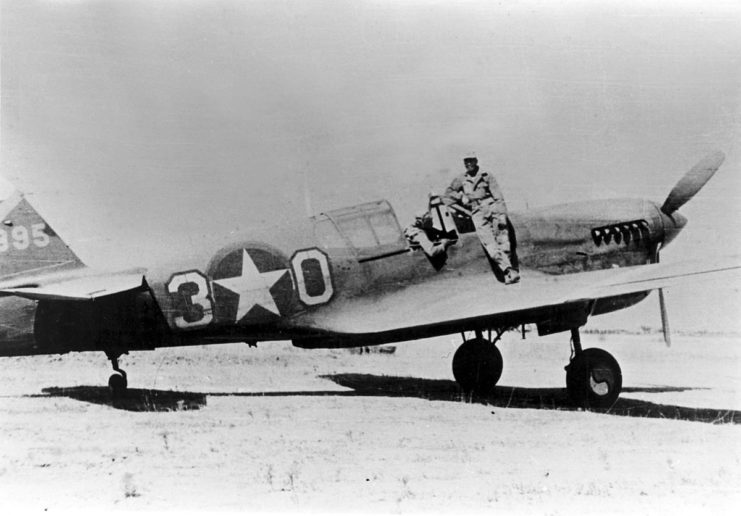
Defending Thélepte
Thélepte was the site of the most intense fighting for the 33rd. They faced an assortment of German aircraft – JU-88 bombers; JU-8 Stuka dive bombers; Messerschmitt ME-109 fighters; new Focke-Wulf FW-190 fighters.
The Stuka and the JU-88 proved relatively easy targets, being less agile in the air. The fighters, however, could go faster and higher than the American P-40s, making them a significant threat.
The early fighting was almost entirely defensive. The pilots needed to make their base safe before they could go on the offensive. Fortunately, nearby mountains helped to make the base defensible. Unfortunately, there was hardly any warning when the Germans attacked, as there was no radar in the area. Men rushed for their foxholes as German bombers descended to 4,000 feet to attack the airfield.
In most aerial operations of the time, the losses were almost entirely among the air crews. At Thélepte, the ground crews also suffered.
Learning to Win
The experience of war was teaching valuable lessons. One of the first tactical orders Major Philip Cochran gave his men was how to react to German fighters. As the Germans descended out of the sun, the American pilots naturally turned to face them, losing speed and maneuverability in the process. Cochran advised them to maneuver defensively instead until the enemy flew past; then get on their tail.
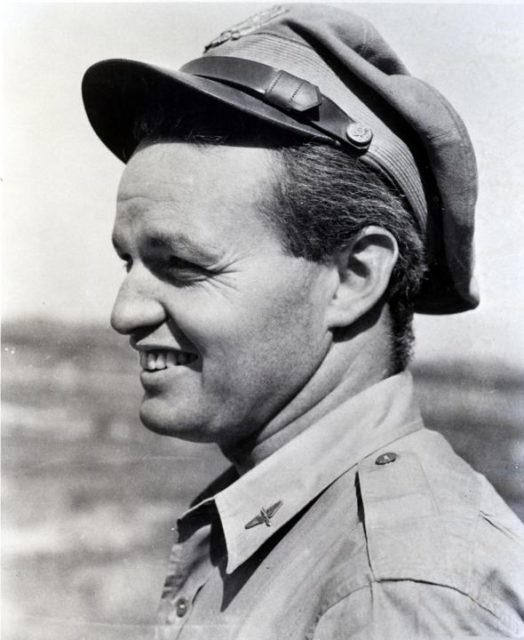
Guerrillas of the Air
By January 1943, air power was building up at Thélepte. The rest of 33rd Fighter Group joined 58th Squadron. So did a French squadron flying 59th Squadron’s old planes, as well a squadron of A-20 light bombers and twenty-five P-39 fighters.
Nobody had a clear strategy for taking the fight to the enemy. Instead, they engaged in something like guerrilla warfare, making swift, frequent strikes to keep the enemy off balance. 33rd Squadron strafed airfields, escorted the P-39s in attacks on German tanks, and accompanied the bombers on their missions.
The technique did not provide the satisfying aerial combat the pilots wanted, nor the level of cover the ground troops needed.
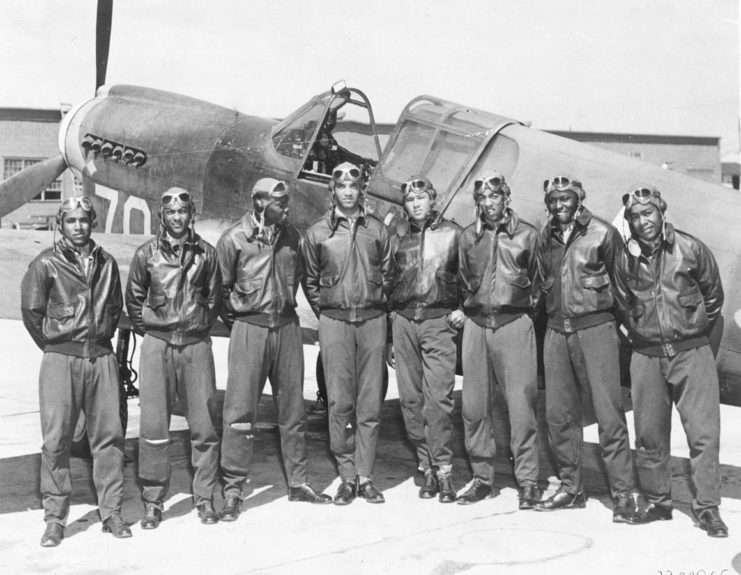
Changes in Tactics
In response, the squadron’s tactics began to change.
Captain Levi Chase changed attitudes towards strafing German supply columns. In the early days, the Americans had first flown low over the columns, giving the men a chance to get out before they came back and attacked. Chase realized it was putting the 33rd at risk of being shot from the ground. They abandoned their gentlemanly conduct to ensure their own survival.
William “Spike” Momyer was another pilot who showed better ways of fighting. The Americans struggled to take down the fast-moving German fighters. On January 5, by staying high above the bombers he was protecting, Momyer got on the tail of an ME-109 and shot it down.
Under Pressure
The 33rd were getting better at their task, but that did not make life easy.
German airborne infantry moved around Thélepte, aiming to disrupt American supply lines and so cut off the airfield. In the first two weeks of January, aerial attacks in the area increased. Meanwhile, German ground troops were pushing from the east.
By January 14, less than half the group’s aircraft were operational. Many men had been killed or injured. Group flight surgeon Major John A. Woodworth was worried about the effects of stress on the troops who had been in constant action for a month and a half. Lt. Robert Okey flew out on his own to the German lines and was never seen again.
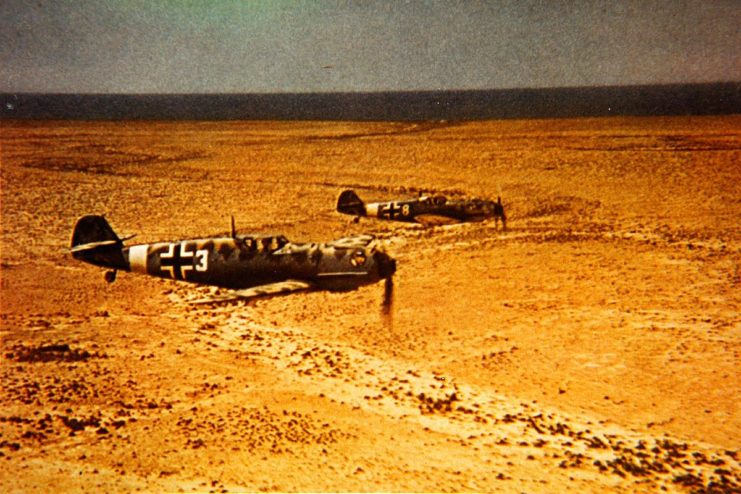
Not Broken, But Battered
Through their bold efforts, the 33rd were winning in the air. After January 15, heavy losses forced the Germans to reduce attacks on Thélepte dramatically.
On February 10, the exhausted 33rd were pulled off the front line to rest. Shortly after, the ground war swept across the base, and it was lost. However, they could be proud of all they had learned and all they had achieved in just three months.
Source:
Orr Kelly (2002), Meeting the Fox: The Allied Invasion of Africa, from Operation Torch to Kasserine Pass to Victory in Tunisia
